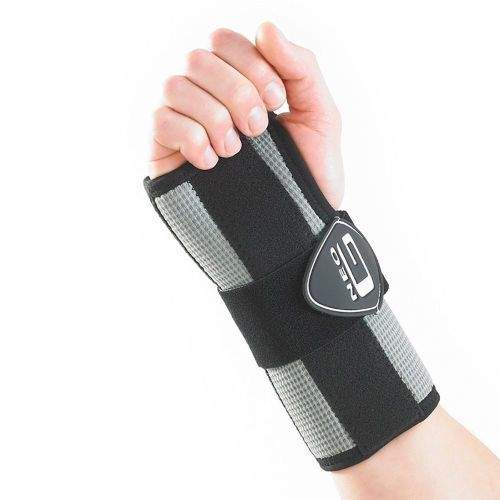
Back Supports: Types, Benefits, and Concerns

There are several activities in our day-to-day life that affect the flexibility of our backbone muscles. Practicing heavy lifting daily can also affect your back in the longer run. In our routine life, many of us would be already wearing some of the other body support belts for wrist supports, back supports, neck supports, etc.
Guarding the back with support belts or braces is a good idea for those who have a joint sprain, muscle strain, some other types of injuries, or recovery after surgery. Back belts are common in most jobs where heavy lifting is required. You might have often seen people wearing them at work obviously because their back needs support. Support belts come in many styles, designs, and ranges.
When you buy a well-designed back support belt, they deliver support that helps relieve and prevent back pain resulting from muscle strain, sprains, spasms, and disc problems. For some, this can bring better recovery or be a lifeline to those who need to keep going when their back pain prevents typically daily or work activities.
It constrains action involving muscle groups and suspensory ligaments as well as assists in improving good posture. There are different kinds of belts and braces available like:
- Back brace
- Back traction belt
- Copper belt
- Elastic back brace
- Back pain belt
Let me emphasize two of the most common back supports for you:
- Elastic Belts
There are various types of elastic belts available. How can you know which will be effective for you? Many are too heavy to carry, made of cheap materials, and can make you sacrifice comfort. No brace is entirely comfortable to wear for long periods, thus relying on elastic belts is the best option. They are affordable and effective. Elastic back support belts are helpful for mild to moderate pain levels and lifting tasks. They are made of stretchable material; thus, it provides your good back support without making it stiff and painfully rigid.
- Back Belts Using Mechanical Advantage
These braces are made up of solid yet breathable materials. These materials are non-stretch yet pliable for better compression without demanding your comfort in return. The non-bulky design provides discrete wearability. This belt maximizes a smooth, dynamic approach to abdominal compression. It provides stability and control to the spine. You can adjust these belts with minimal motion. An effortless pull with one hand can effectively tighten the belt, and you are all set to go!
The mechanical back support belts are helpful for moderate to severe levels of pain. It is an ideal back belt for those who do heavy or mild lifting throughout the day. You should avoid lifting anything when you are in pain. If you have to, then you should use this belt. It comes with back and front panels that improve stability and maximizes compression. These are the best options when it comes to managing inflammation due to the higher compression levels.
Also, the back brace is a favorite among patients due to its cost and effectiveness. It is a fundamental member of the family of support belts. It uses a mechanical advantage for providing stability and ease of use. Wearing strong and supportive braces with mechanical advantage is highly recommended if you perform any lifting or stressful activity daily.
Benefits of Using Back Support Belts
You will likely experience the benefits when you wear a back-support belt properly. It is advisable to wear the back support according to your doctor’s instructions. Below are some issues that back support belts target:
- Limiting movement
After an initial low-back injury, you should limit your spinal movement. This allows your injury to heal on its own by relieving excessive demand on the muscles.
- Correcting deformity
After back surgery, braces can correct a deformity or facilitate healing.
- Stabilizing the back
Supporting your spine and abdomen with it can relieve pain and improve your body posture.
- Facilitating a return to work
After an injury or surgery, a support belt can make your transition back to work easily possible.
- Providing support
Even during periods of episodic pain, the back-support belt wearers get relief when rising from sitting to standing or during any other transitional movements.
- Easing pain
Some belts even have massaging and heating elements that relieve back stress. Additionally, wearing a support belt may act as a placebo for pain relief.
Physician’s Concerns
There are also some physician concerns that one should be aware of. When support belts are not properly tight or maintained, you can fall under the risk of creating more issues than you started with. Issues that can occur from improper belt use are:
- Skin lesions
Improperly fitting belts like those marked one-size-fits-all often lead to skin irritation and lesions.
- Muscle atrophy
Long-term usage of back support belts can lead to muscle atrophy, eventually setting your spine up for injury later.
- Transfer of the load to other muscles
While restricting motion for one part of the back, it requires other muscles to bear the load. This can result in injury to those muscles.
- Higher blood pressure
The tight compression of your muscles can also increase your blood pressure and pump up your resting heart rate.
Conclusion
You can get a wide variety of back supports like the above-mentioned belts. You should never ignore any pain in the body; it may be the beginning of some serious problem. Consult a doctor in such cases. They can provide you with necessary remedies for any of your body parts. There are remedies like belts, braces, canes, etc., for giving you wrist supports, neck supports, ankle supports, etc. Also, we do not promote wearing back belts for any reason or consulting with doctors.